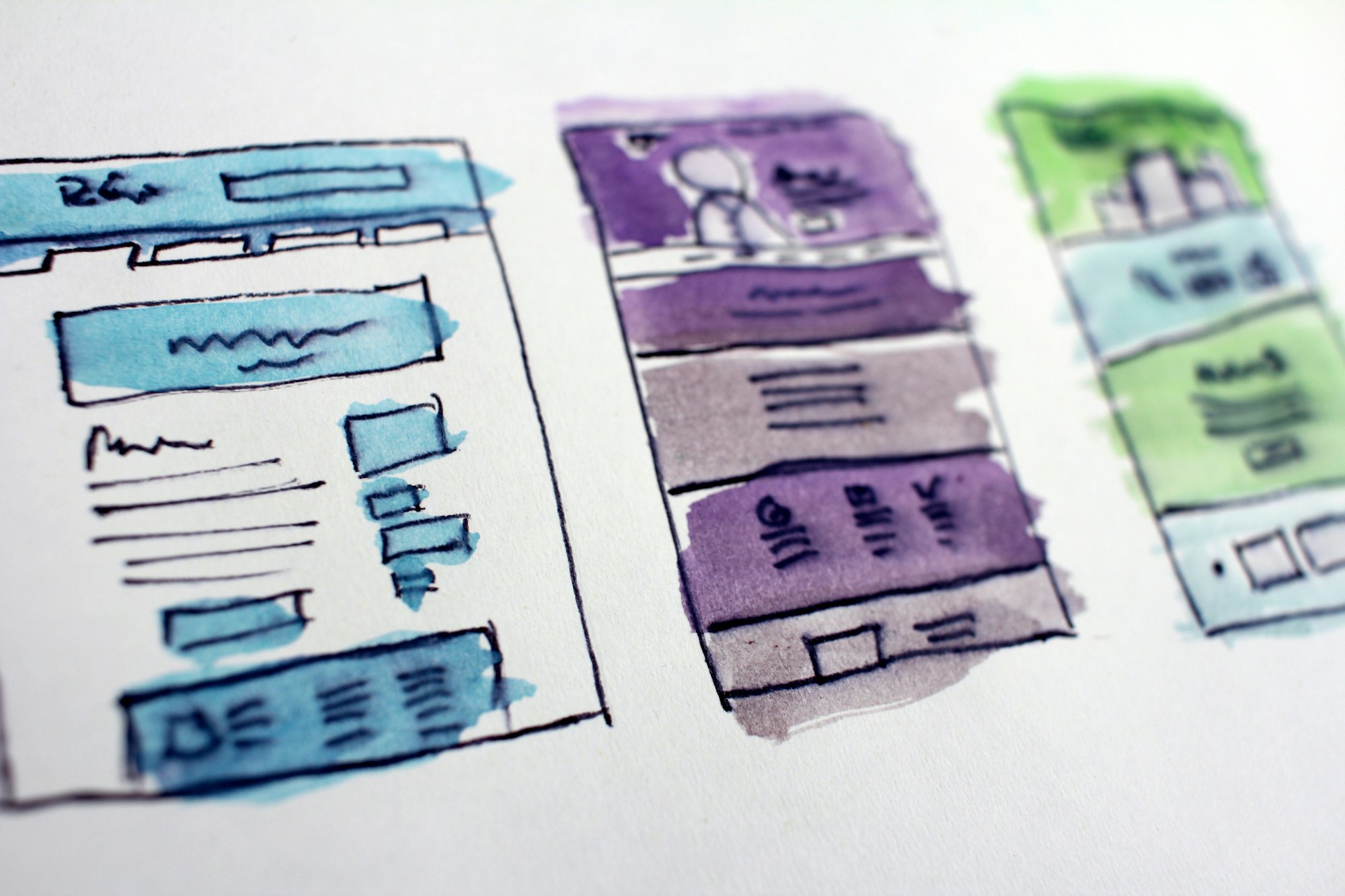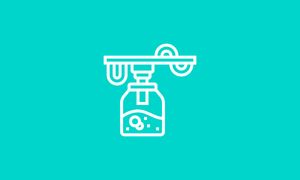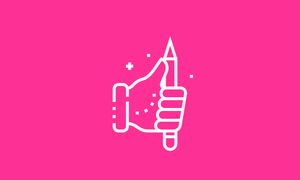The fashion industry is a huge market. Currently, there are as many as 60 million fashion blogs to read where fashionistas share tips and insight into the constantly-changing trends in the industry.
If you love style, clothing, and sharing your passion with others, a fashion blog is an excellent outlet for your creativity and skillset.
Don't know where to begin? You can learn how to start a fashion blog in just five simple steps.
What is a Fashion Blog?
It's crucial initially to outline what a fashion blog is (or isn't).
A fashion blog is a platform for writers to discuss clothing and accessory lines, beauty tips, celebrity fashion, and apparel market trends. These writers pay attention to trends and current events in the fashion industry.

The blogs share opinions, suggestions, and experiences on these topics to inform their readers and keep them abreast of industry news. Fashion blogs usually contain eye-catching visuals to support the written content and appeal to a broad audience.
Fashion is a highly popular niche. Creative people can share their ideas and vision with the world and make a living doing what they love. But it's also highly competitive. Not only are trends constantly changing, but designers want to be the best at what they do and attract consumers to their content.
Fashion is often a highly lucrative career and can lead to fame and fortune if supported by a known celebrity.
There are several types of fashion blogs. Some specifically focus on incorporating certain fashion trends into your own wardrobe. Others are how-to articles that teach makeup application tips and tricks. The most common types of fashion blogs are:
- Celebrity fashion: These blogs cover red-carpet ensembles, suggestions on how to recreate the looks worn by television stars, and beauty trends used by Hollywood actors.
- General fashion: This material explores a variety of everyday fashion insights, like where to shop for the best clothing deals, breaking news in the fashion industry, and colour trends.
- Personal style: If you have a special flair for creating unique ensembles, a personal style blog is a great way to influence others and share your creative looks.
- Street style: Fashion inspiration can come from anywhere, and these blogs highlight everyday people's approach to clothing and beauty.
- Fashion critique: Experts in the fashion industry can share their professional insight about trends, application, and style adoption among both celebrities and everyday people.
- Fashion news: Everything from famous designers to high-end shows, fashion news blogs keep people informed about newsworthy events happening in the industry.
- Shopping: Whether you sell your own clothing and accessories or want to share ideas on where to find certain pieces, shopping blogs are a great way to provide a service to your audience.
Regardless of their type, fashion blogs are a way to provide a unique perspective and feature products you stand behind. All of this provides value to your readers, attracts an audience, and helps generate revenue.
How to Start a Fashion Blog in 5 Simple Steps
Fashion is a big influencer industry and continues to grow. By the end of 2025, fashion and style companies are expected to spend nearly $15 billion on sales and promotions. To capitalise on its evergreen necessity, you can start a fashion blog by following these five simple steps.
Step 1: Research Your Niche
To create a successful blog, you must hone in on a specific aspect of the fashion industry and find your niche. If you want to connect with a younger audience, consider a blog that focuses on affordable substitutions for high-end looks. If you have an in-depth understanding of current trends, create a blog that offers recommendations on incorporating those looks into an everyday wardrobe.

Research your niche and ask yourself the following questions:
- What is your own style?
- Who do you want to reach?
- What issues are important to you? (Environment; body issues; etc.)
- What makes you unique?
- Do you have the expertise to be a critic?
The answers to these questions can guide you toward choosing a niche that can be successful for you.
Step 2: Analyse the Competition
Even with a narrowed focus, chances are there are millions of other fashion blogs writing about a similar thing. How can you set your blog apart from the competition? Begin by taking a close look at what your competitors are doing. Learn from their successes and their mistakes to create a blog that provides a better experience.

Look through their posts and find articles with high engagement. Consider expounding on some of those topics for your own blog. Articles with low engagement are topics that your audience probably won't be interested in, so you can avoid those.
Read user comments. Look up competitors on social media. Monitor chat rooms and forums to see candid conversations about the reader experience they're providing.
You can learn a lot about the needs and expectations of your audience. Do longer blog posts get better reception? Are posts with video and graphic visuals preferred? Analysing your competition can save you time and resources, as their experience can help flatten your learning curve.
Step 3: Choose Your Platform
There are numerous platforms available to host your fashion blog. Choosing the one that's best for you depends on several factors. Once you've identified your niche and know how to set yourself apart from the competition, you'll have a better idea of what your needs are and which platform can best serve you.
If you want to learn how to start a fashion blog with no money, you can choose a free platform like WordPress, Weebly, or Medium. Of course, these do have some limitations, like a limited selection of themes, the inability to remove ads from pages, and no custom domain name. You'll need to decide what's most important to you and choose the platform that supports those priorities.
Step 4: Find a Template/Theme
There was a time when creating a website meant learning HTML code. Today, web creation is a much more simplified process so that practically anyone can create their blog.

Platforms provide several templates that allow users to drag and drop information into a pre-designed layout. These templates are available in a variety of themes, with certain colour combinations, font styles, and general personality to enhance and support the content on your blog.
Choosing a template you can work with and a theme that fits your niche is essential. When people visit your blog, the aesthetics of your site play an important role in your overall success. If people aren't comfortable while on your blog, they're not going to stick around to read your articles.
The fashion industry, by nature, is impacted by visual appeal. Choose a theme that is attractive and supports the niche you've chosen. If you're going to post about environmentally-friendly fashion choices, consider a template whose theme features greens, tans, and blues. Choose a theme with gold accents and formal fonts if your blog is all about couture brands.
Before you commit to a template and theme, consider the following:
- Read the description carefully: Every template and theme offers certain features and functions. Be sure the one you choose will support the things you want to accomplish with your blog.
- Test it out: Most themes have a demo that allows you to try it out and see if it will work for your needs. Make sure you can customise the areas you want to tailor and that it supports the kind of media you wish to include.
- Consult user reviews: If you find a template or theme you like, see if others have had a positive experience. Better to learn ahead of time about any flaws in functionality before you invest time and resources with a page that won't suit your needs.
Once you've done your research, you can choose a template and theme that are visually appealing while providing the functionality you require.
Step 5: Publish Your First Content
When you're ready to begin developing content, use audience research to determine what topics readers will find interesting.

Write original, helpful, and meaningful material that provides value to your audience. Spend time researching your topic to ensure you're providing the most current information and insight. You want to establish yourself as an authoritative fashion blogger whom people can trust and depend on for accurate and reliable information.
Craft your first blog post directly in your new template. Be sure to include relevant keywords and links to valuable sources. This helps with SEO and earns you higher search engine rankings, increasing visibility and brand awareness.
When you think your article is finished, you can choose to preview it. This allows you to see your post through your reader's eyes. Identify any typos, errors, or formatting issues that need to be resolved. When you're confident it's ready to go live, click on "Publish." Ta-da! You've published your first fashion blog post!
Summary
A fashion blog is a great way to harness your flair for style and your passion for the industry to help educate others about these topics.
Although you could take an online fashion blogging course, learning how to start a fashion blog is relatively simple. By following the five steps outlined above, you can develop a reliable blog that attracts an audience, drives traffic, and helps generate revenue.






